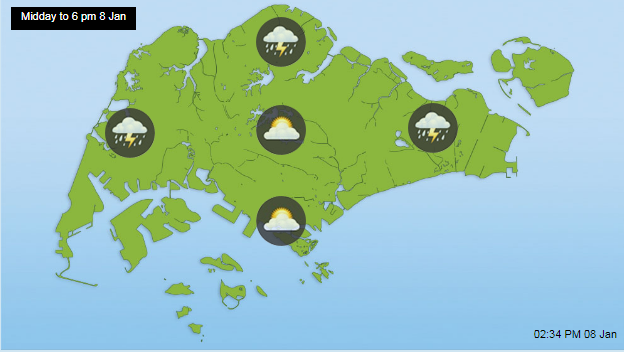
Meteorological Service Singapore (MSS) has said that the chilly weather experienced last week in the city-state is the coldest spell in at least 10 years. In contrast, 2017 was the warmest year on record, irrespective of the long-term temperature changes in Singapore due to the El Nino current and global warming.
This year, January 10 to January 14 saw a dip in temperatures due to a monsoon surge that is commonly seen in the country between December and March. The surge led to increase in wind speed and blasts of cold air in the Northern Hemisphere which rushed into the South China Sea.
This chilly spell comes after the exceptionally warm weather in October 2017, when temperatures reached above 35°C for a few days, says MSS in a statement. While the Singapore weather has the trend of being influenced by short-term monsoon surges, this year the temperature dip continued from Wednesday to Sunday last week.
Experts believe that the unusually cold weather might have resulted from the accumulation of rain clouds in the sky above the city-state, which brought coolness as well as blocked out the sunlight, resulting in more gloom.
On Wednesday, the minimum temperature recorded by 22.8°C, which dropped to 21.2°C on Sunday. This temperature, recorded in the areas of Jurong West and Admiralty, is the lowest in Singapore since the year 2016. It is believed that such dips can becomes more common due to the changing climate structure in the world.
Looks like the residents of Singapore should brace themselves for more heat waves, prolonged dry spells and intense rainfall. Irrespective of what people believe, global warming also causes abnormal cooling of the weather.
This year, Singaporeans have been dealing with weather woes as several thunderstorms hit the region, resulting in flash floods and strong gusts of cold wind. People also reported incidents of fallen trees and branches.
Check out a video of the flash floods in Singapore:









